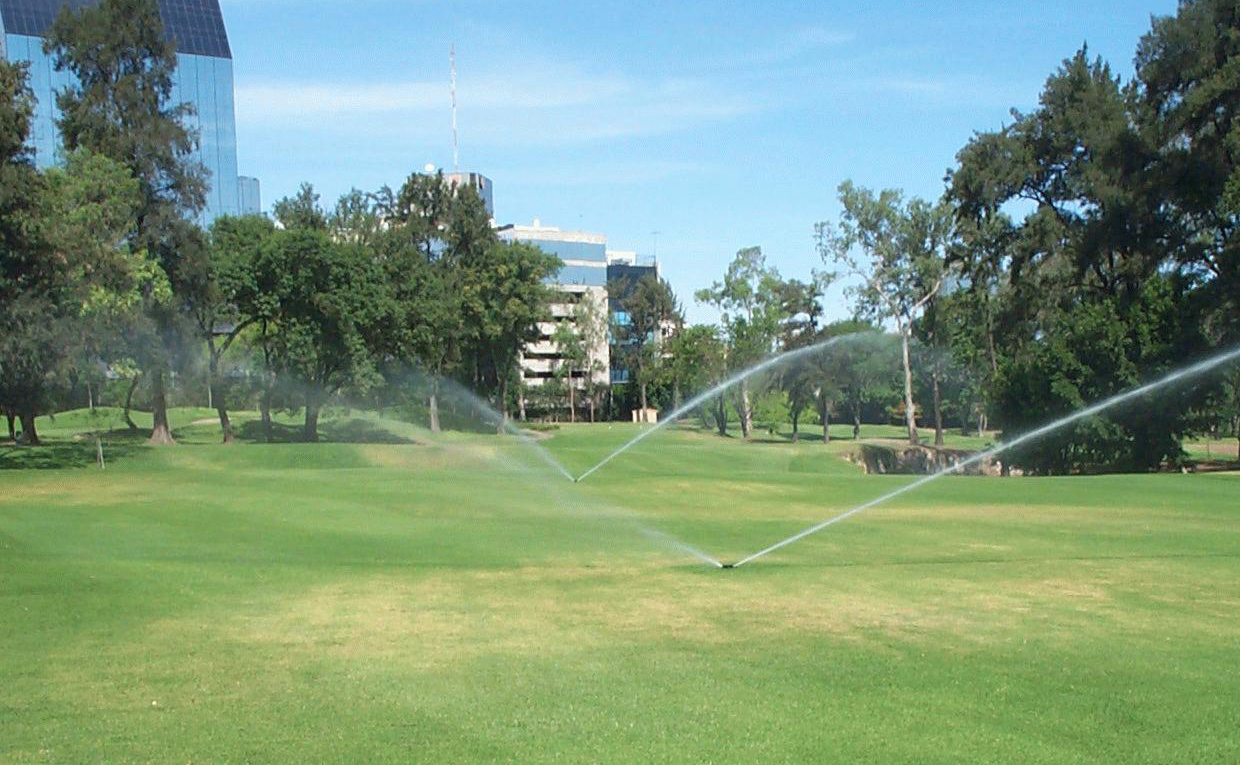If your golf course has any problems, they will likely show up in August. Here’s what you can do about it.
Nobody likes to admit they have any flaws or weaknesses. We want others to only see our good side. Golf course maintenance professionals are no different.
After several weeks of hot summer conditions, the month of August has a way of exposing any shortcomings there may be with agronomic programs on your golf course. Here are three of the most common issues seen this time of year and three ways to overcome any trouble with your turf.
Issue #1: Gaps in Irrigation Coverage
The combination of hot temperatures and a lack of rainfall for several weeks will expose inconsistencies in irrigation coverage on your golf course.
What is causing the wet spots and dry spots? It could be several factors including:
- Inconsistent sprinkler spacing
- Low sprinklers
- Turf blocking the irrigation stream
- Low pressure
- Clogged nozzles
- Worn out internal parts
Issue #2: Weeds
Any skips or misses from a spring application of a preemergence herbicide are probably showing infestations of crabgrass, goosegrass and possibly dallisgrass right about now.
Also, August is the time that spring applications of preemergence herbicide are losing effectiveness unless a follow up application has already been made. By following a fall fertilization strategy, you can achieve the consistent, deep green turf expected of golf courses.
Issue #3: Weaker Grasses Checking Out
Do you really want to know how much Poa annua you have in your stand of perennial ryegrass or Kentucky bluegrass? Whether you do or not, you usually find out in August. The hot temperatures, diseases and elevated salts cause a rapid decline of Poa annua leaving only the strong to survive.
Overcoming Weaknesses in Agronomy

Exposing and knowing where the problems are provides an opportunity to correct deficiencies and improve your course in the future. Here are three things that can be done now to be in better shape for next summer:
- Investigate the situation: Try to determine what happened. Are maintenance intervals too far apart? When was the last time high traffic areas were overseeded with stronger grasses? Was spray equipment properly calibrated prior to application? Try to pinpoint the issue so that adjustments can be made.
- Document: Take photos and make maps of problem areas. There may not be time in the maintenance schedule to address the situation right now but having a record of the issue allows you to come back later and address it.
- Plan for the future: Develop an agronomically sound plan to address problem areas. For example, order parts and supplies to make needed irrigation improvements, rotate to a different preemergence chemistry to avoid weed resistance and seed stronger grasses in weak areas so they will have a chance to establish before next summer.
The stressful conditions in August put your golf course to the test and expose the areas that need more attention. Although August can be hot and hectic, by applying these three strategies, you can strengthen your agronomic program and overcome these issues.
Looking for answers to specific questions about agronomy? Send me an email here - I'm happy to help.




